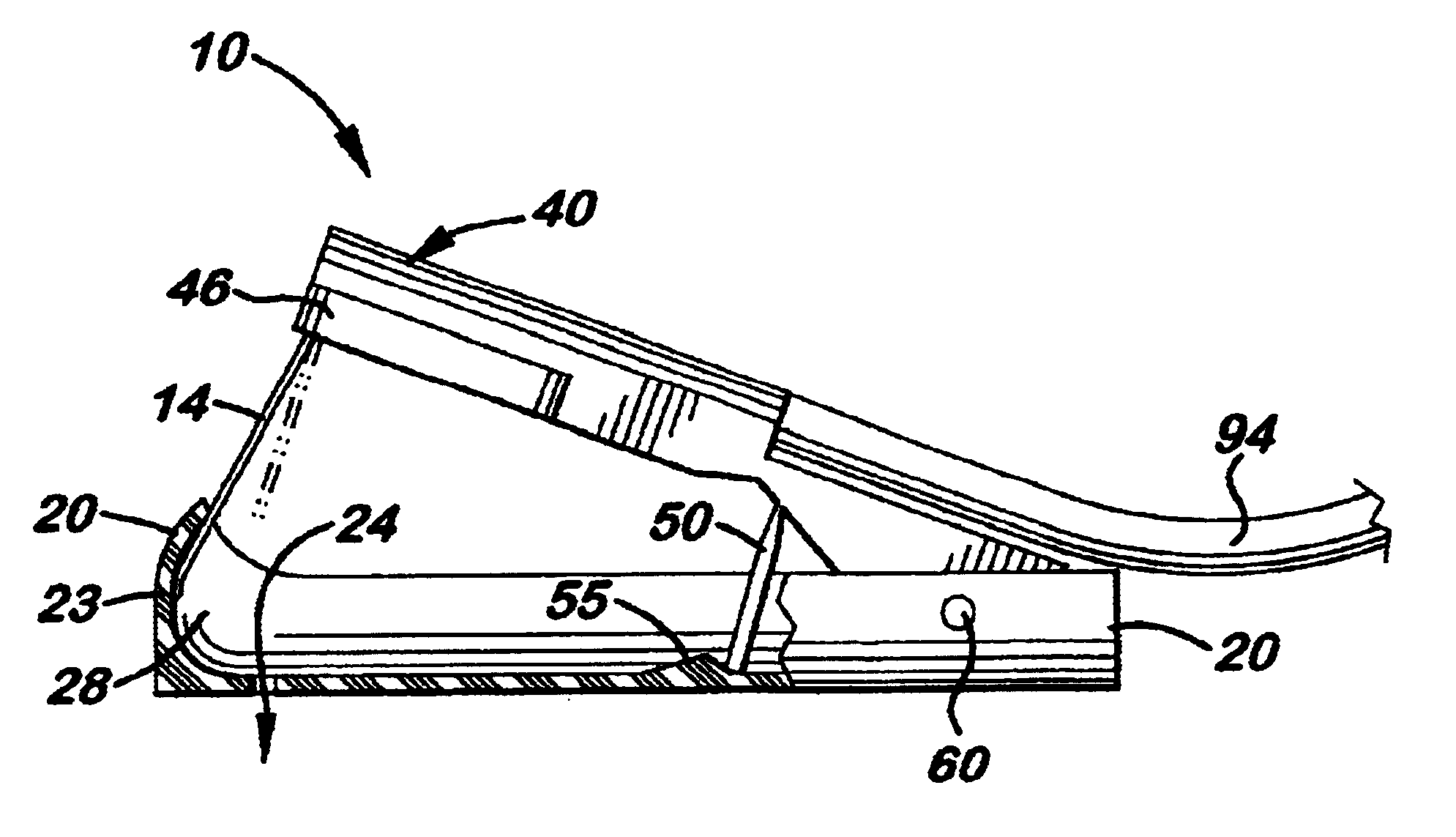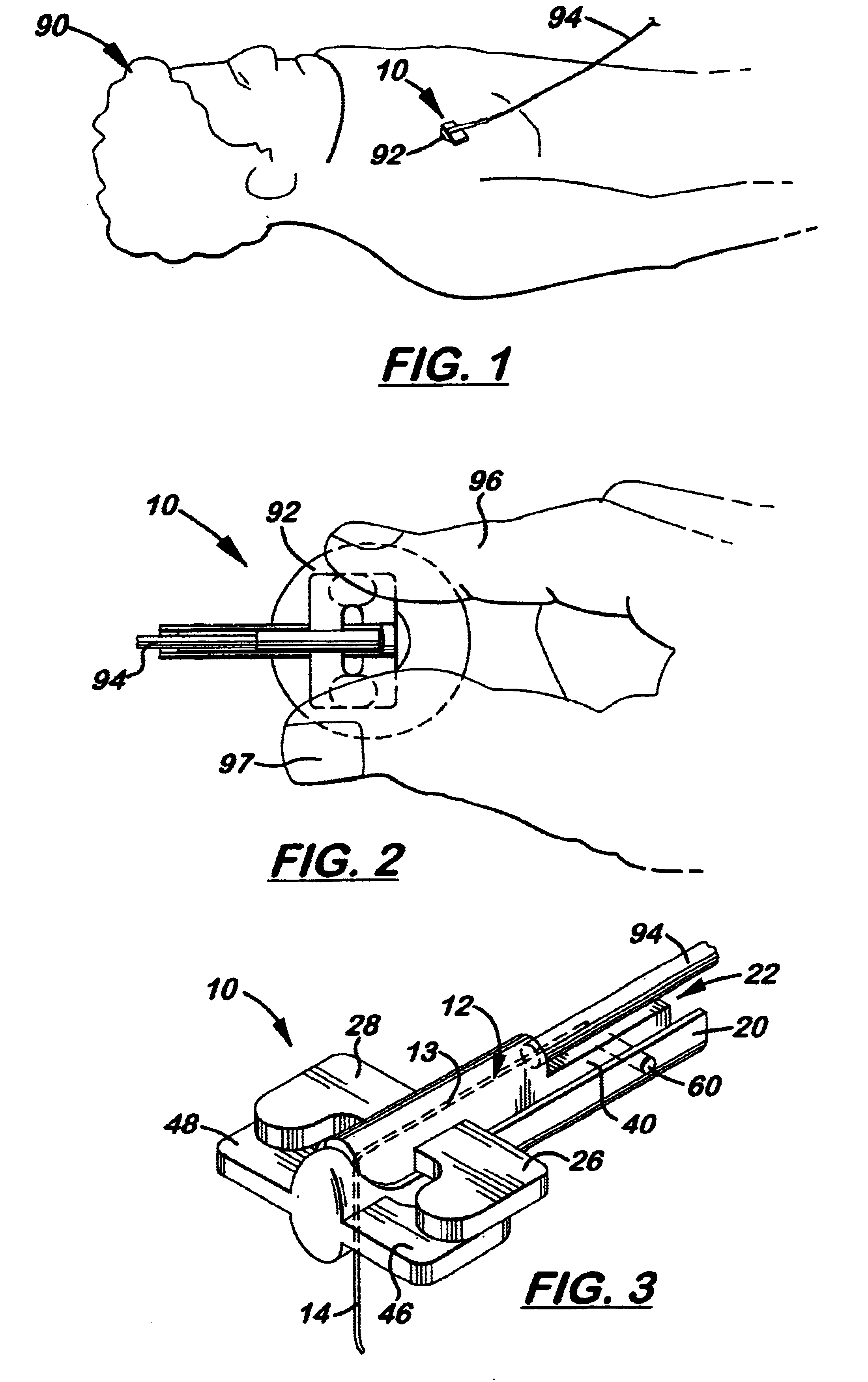Safety port needle assembly
a safety port and needle technology, applied in the direction of suction devices, needles infusion, other medical devices, etc., can solve the problems of accidental skin puncture, accidental puncture,
- Summary
- Abstract
- Description
- Claims
- Application Information
AI Technical Summary
Benefits of technology
Problems solved by technology
Method used
Image
Examples
Embodiment Construction
)
Disclosed herein is a safety port needle assembly, generally referenced as 10 in the accompanying Figures., used to connect an I.V. line 94 to an implanted port needle receiving port 92 attached to a patient 90. More specifically, the needle assembly 10 is designed to prevent accidental punctures in accessing and de-accessing an implant port 92.
The needle assembly 10 includes an L-shaped port needle 12 similar to a Huber needle with an integrally attached horizontal leg member 13 and a vertical leg member 14. The horizontal leg member 13 of the port needle 12 is longitudinally aligned and attached to a pivoting needle arm 40. The vertical leg member 14 extends downward perpendicular to the longitudinal axis of the needle arm 40. A channel 22 is formed along the entire length of the main body 20 that enables the needle arm 40 to rest partially inside the main body 20 when folded downward over the main body 20, as shown in FIGS. 3-5. A bore 24 is also formed in the main body 20 so th...
PUM
 Login to View More
Login to View More Abstract
Description
Claims
Application Information
 Login to View More
Login to View More - R&D
- Intellectual Property
- Life Sciences
- Materials
- Tech Scout
- Unparalleled Data Quality
- Higher Quality Content
- 60% Fewer Hallucinations
Browse by: Latest US Patents, China's latest patents, Technical Efficacy Thesaurus, Application Domain, Technology Topic, Popular Technical Reports.
© 2025 PatSnap. All rights reserved.Legal|Privacy policy|Modern Slavery Act Transparency Statement|Sitemap|About US| Contact US: help@patsnap.com



